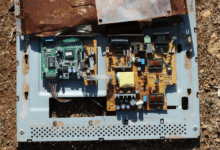
Are You Blockchain Ready?
By: William Herkelrath
Blockchains, once considered a nascent, frontier technology, have become increasingly critical infrastructure for enterprises that want to keep pace with the future of information and value transfer. A blockchain is a shared digital ledger of transactions that is duplicated and distributed across a network of computer systems. The ledger is nearly impossible to cheat or hack, because it is verified by multiple participants across the globe and underpinned by cutting-edge cryptography. A blockchain network can be used to execute smart contracts, transfer value, track orders, settle payments, verify accounts, and more.
To facilitate transactions, a set of rules — called a smart contract — is stored on the blockchain and executed automatically when a certain condition has been met. For example, a smart contract could include a business payment between enterprises that automatically executes when certain conditions of a deal are achieved.
While there remains a general assumption that blockchain technology is still in its early stages, in reality, it is already entering the early phase of majority adoption, especially by the finance industry. Recalling the massive digital transformation propelled by the internet, many forward-thinking enterprises in the finance sector and beyond are already taking important steps to become blockchain-ready.
Today, the rise of reliable software for holding digital assets and interacting with multiple blockchains and smart contracts have made it easier than ever for enterprises to embrace this new world. Companies that are not already developing a blockchain integration strategy are at risk of being left behind.
The technology-adoption race is on
There is growing consumer demand for all sorts of new sectors within the blockchain space, including Decentralized Finance (DeFi), Non-Fungible Tokens (NFTs), and emergent smart contract applications in insurtech, environmental sustainability, real estate, and more. As one recent Gartner survey showed, around 11 percent of enterprises are already employing blockchain technology in their operations today, while 75 percent are actively researching how they could do so.
Market intelligence organization Blockdata recently concluded that over half of the world’s top 100 banks by assets under management (AUM) now have some type of blockchain and cryptocurrency exposure. Similarly, Deloitte conducted a Global Blockchain Survey and 76 percent of respondents believed digital assets would serve as a strong alternative to, or outright replacement for, fiat currencies in the next 5–10 years.
With distributed ledger technology and smart contracts poised to disrupt $867 trillion in traditional markets according to the 2021 World Economic Forum insight report, the race is on for enterprises to develop risk-adjusted integration strategies and capitalize on the rapidly emerging blockchain economy.
Custody as a first step
In response to growing user demand over the last year, various tools and platforms have been launched that allow enterprises to easily interact with public and private blockchains. Financial institutions, in particular, have faced increased pressure to offer crypto solutions, and as a result, custody – the ability to hold blockchain-based digital assets securely – has been one of their initial areas of focus. While some companies are still building their own solutions from the ground up, most are realizing that institutional-grade systems already exist and are using partnerships as a quick way to meet consumer demand.
For example, late last year, Standard Chartered, one of the largest banks in the United Kingdom, announced plans for a digital custody system called Zodia, the result of a partnership with Northern Trust. In the United States, BNY Mellon quickly followed suit, partnering with Fireblocks. Just as notably, Fidelity National information, a vendor to banks with nearly $300 million checking accounts, has partnered with custody company NYDIG and claims that hundreds of banks, including small regional banks, have signed up to offer digital assets to their users.
The ability to hold digital assets through partnership represents a significant paradigm shift, in which major enterprises increasingly agree that pre-existing blockchain and crypto offerings are up to their standards and are worthy of being incorporated into their technology portfolio.
DeFi as the next frontier
While many enterprises are still scrambling to incorporate basic custodial solutions, the forward-thinking ones are already looking toward the next frontier: DeFi, short for Decentralized Finance. DeFi, the fastest-growing sector in the blockchain industry, seeks to recreate traditional financial services like lending, borrowing, trading, saving, and more by using decentralized architecture.
As was the case with crypto custody, user demand for DeFi is high. Drawn by yield opportunities, transparency, and increased user control, users have already locked over $260 billion worth of assets into DeFi apps across multiple blockchains over the last year alone. Many companies are rapidly realizing that the threat to their business is not going to come from fintech user interfaces but from a paradigm shift in infrastructure that fundamentally changes how people interact with money.
Although DeFi is still a nascent industry, its rapid growth leads some analysts to believe that traditional financial companies could start integrating with some of the most mature applications as early as 2022.
Future-proofing your adoption strategy with blockchain middleware
At first glance, the world of DeFi appears daunting. Enterprises face the challenge of picking and then devoting resources toward integrating with the right blockchains and smart contract environments. They then face further challenges interoperating across other blockchains and legacy systems, problems that are likely to intensify as DeFi continues to become multi-chain, with new applications being built across new blockchains seemingly every day.

Fortunately, as Gartner points out, the industry is witnessing the emergence of blockchain middleware – technology that enables enterprise systems to interact with any blockchain. For example, Chainlink is a decentralized network of oracles or entities that enable blockchains to speak with real-world data and off-chain systems. As a recent WEF report argues, Chainlink oracle networks enable traditional enterprise systems to interoperate with any blockchain without requiring a massive overhaul of their preexisting technology portfolio.
Companies can use middleware like oracle networks to “future-proof” themselves in a sector where winners and losers have still not yet been decided. It is for this reason that fintechs such as Celsius, recognizing the opportunity DeFi can offer to their user base, have begun integrating oracle networks as a means to access the best of the DeFi regardless of the blockchain. Rather than trying to manually integrate with each new blockchain and each new app on each new blockchain, Celsius is integrating with middleware, a network of oracles, that lets it deploy funds across any blockchain and app that is most convenient for them at any given time.
Off the sidelines
The blockchain industry is experiencing an incredible era of innovation. For enterprises, now is the time to position themselves strategically as DeFi becomes more widespread, and as institutions have more proven infrastructure than ever before to securely and confidently interact with smart contracts. Blockchains represent a step-change in the way our global economy will operate, and companies can take full advantage of the simple, now time-tested solutions that prepare them for this monumental shift.






